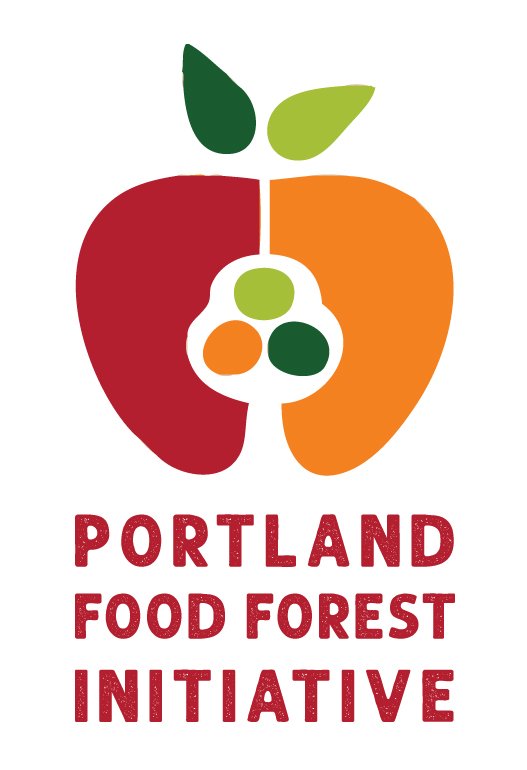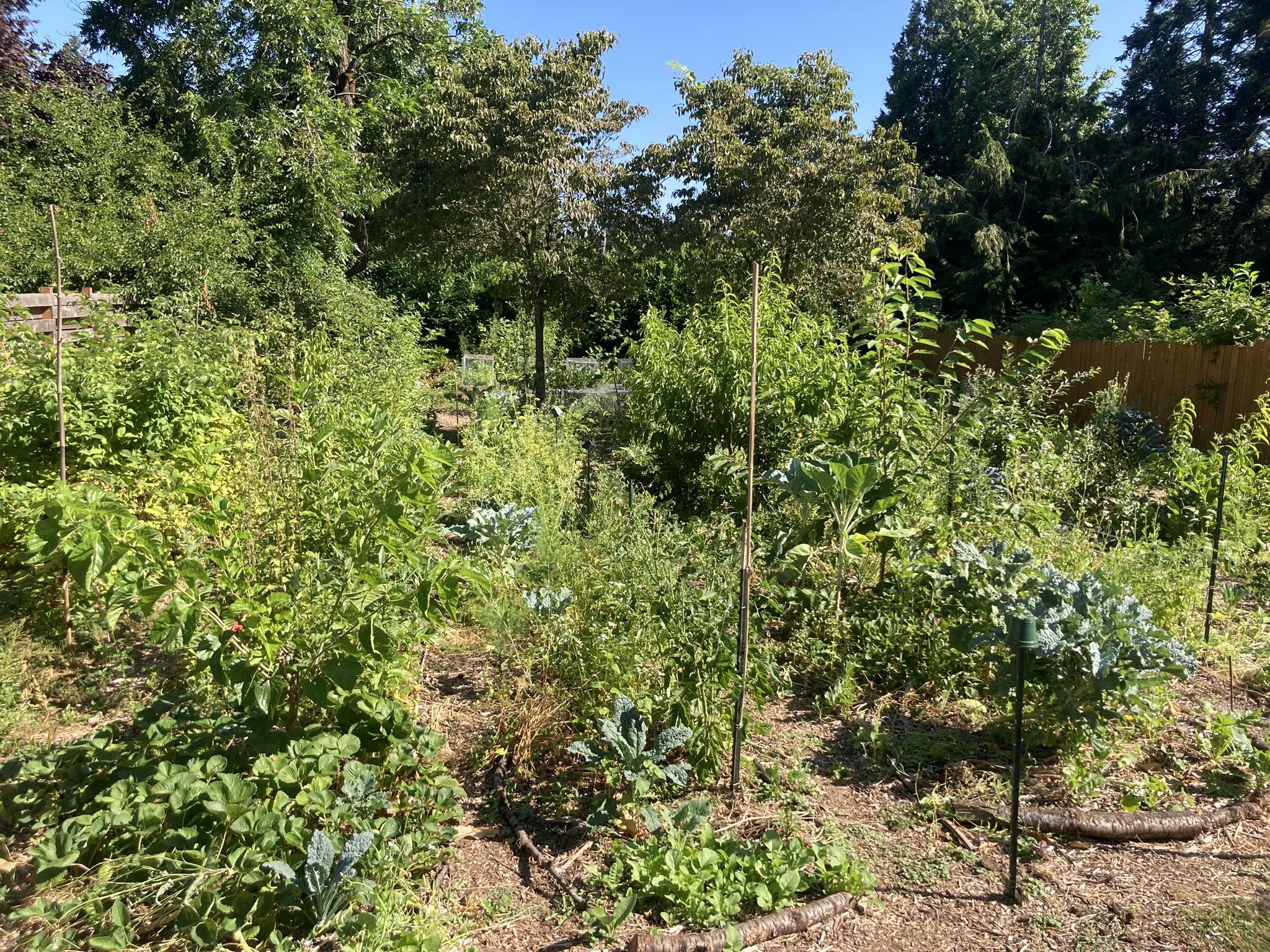
Our Process
There are many ways to plant a food forest!
In the Pacific Northwest, we’ve found that the following method works well for transitioning grass lawns into thriving perennial food-producing agroforestry and forest garden systems.
-
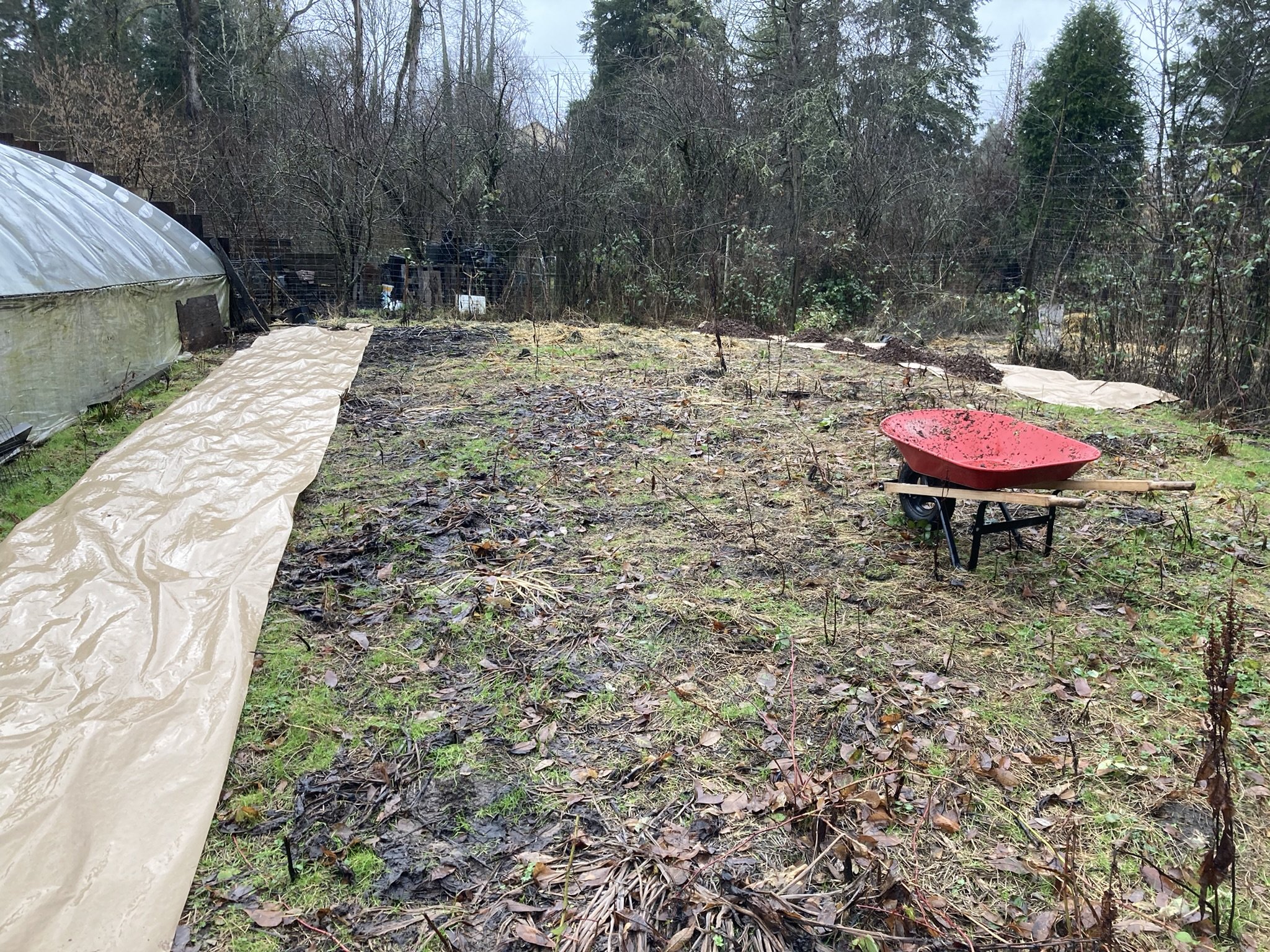
Brown Contractor paper is laid down.
We recommend using paper in lieu of cardboard as it is less likely to contain harmful chemicals and adheres to the underlying vegetation better than cardboard.
-
Cover contractor/craft paper with fresh arborist's woodchips.
Fresh ramial woodchips sourced from getchipdrop.com weigh down the paper, smothering the grass and killing it. The roots decompose in place making soil looser and planting easier. It’s helpful to lay down woodchips 6 months before planting to thoroughly kill grass and begin woodchip breakdown. Never use woodchips from a supply yard as they are inferior to fresh woodchips and are often treated. As long as woodchips are not mixed into the soil, they will not rob nitrogen. On the contrary, as they break down, they will add fertility to the soil.
-

A design is made.
Take into consideration the needs of the site and community, available plants, climate, sunlight, prevailing wind, privacy needs, and other factors.
-

Lay out plants and delineate pathways with string and stakes.
According to the design, measure distances between trees and shrubs to ensure proper spacing. The string makes visualizing the design, guilds, and paths much easier.
-

Rake back woodchips down to soil level.
Using a hard rake to remove woodchips from the planting area is important to avoid mixing them into the soil or falling into the planting hole.
-
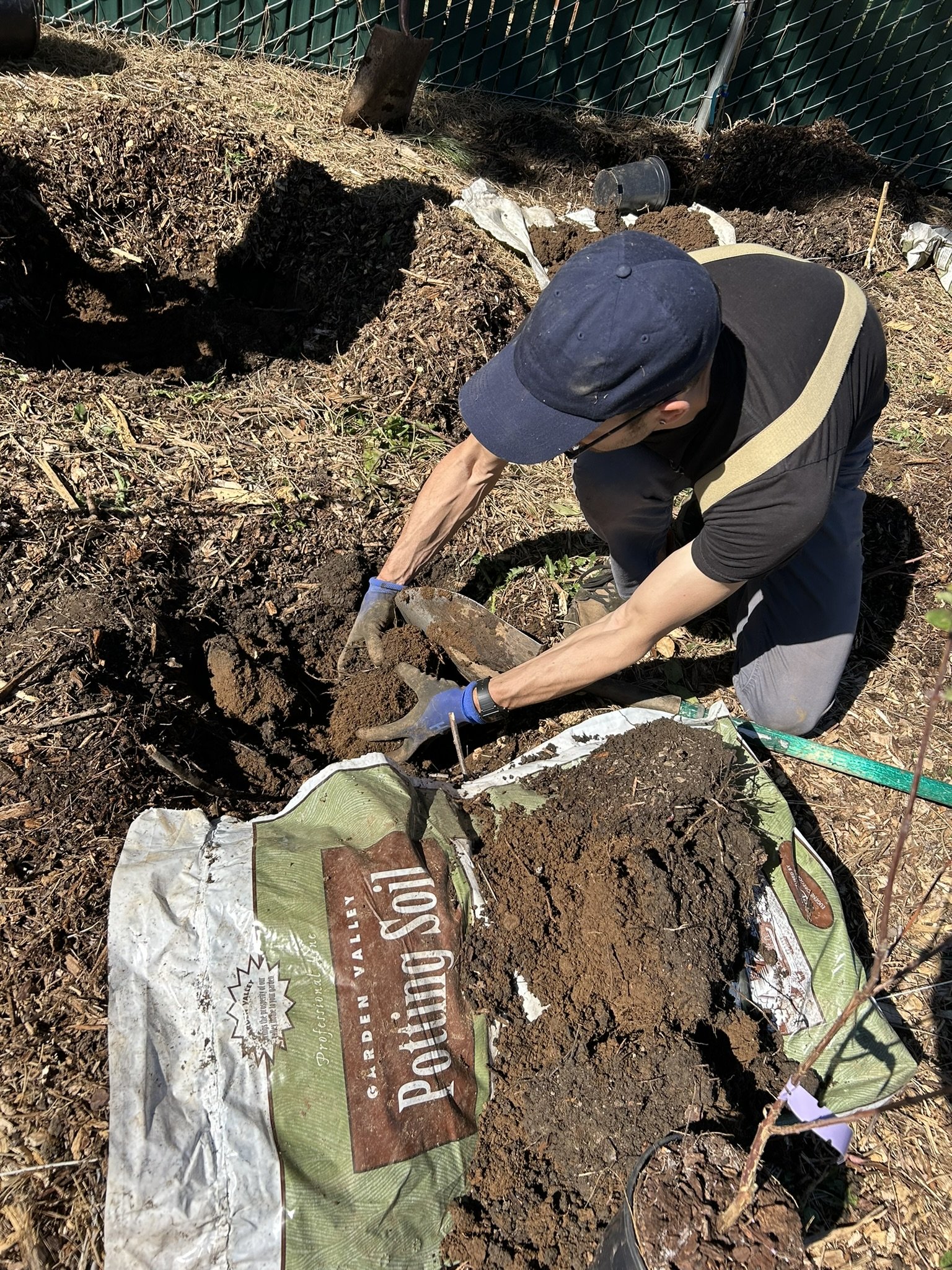
Dig hole and remove soil onto a tarp.
This avoids woodchips from getting mixed into the backfill.
-

Plant trees and shrubs in holes and backfill
Cover soil with woodchips leaving space around stem of the trees. We don’t use any amendments in the planting hole with the occasional exception of mycorrhizal inoculant which aids root development.
-

Add sawdust spawn to woodchips
Winecap Stropharia mushrooms are an excellent choice for woodchips and produce abundant edible mushrooms in most types of woodchips.
-

Sow broad beans underneath woodchips
Many large seeds can be sown directly against or under the soil and buried beneath the woodchips and they'll be able to erupt through the mulch. Beans and squash have a high success rate with this method. Establishing fava or other beans immediately in spring provides a yield in the first year and fixes nitrogen into the soil from the atmosphere.
-

Broadcast buckwheat and daikon seed
Take a handful of seed and throw it! These two seeds when broadcast are able to root down into the soil through the woodchips. Daikon creates soil porosity and adds organic matter to the soil and buckwheat rapidly creates biomass (to be chopped and dropped) and nectar for pollinators
-
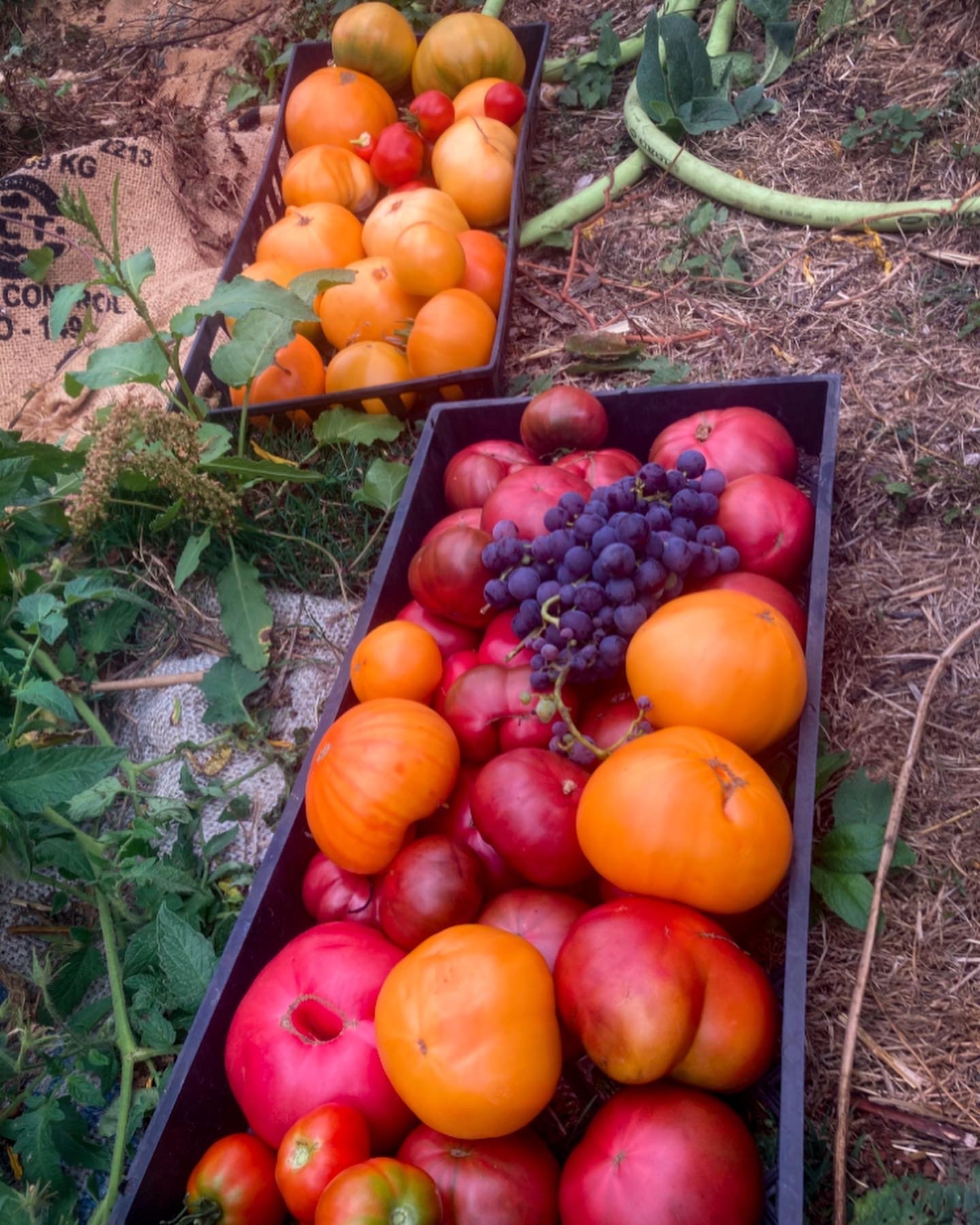
Plant veggies, herbs, flowers, etc. as season allows
Some vegetables and herbs can be planted by direct seeding, but the seed must be large enough and the sprout vigorous enough to erupt through the woodchips. Otherwise, woodchips can be raked back and seeds planted in the soil and as they establish, the woodchip mulch can be pushed back around the seedlings. Never plant seeds into the woodchips as they'll be nitrogen deficient if they establish roots in the woodchips. Plant starts like tomatoes and brassicas should be planted into the soil and woodchips brought back near the stem as mulch.
-
Enjoy your food forest and share with friends
Want your own food forest?
Request a consultation on site and take the first steps in creating a forest garden to feed your family.

